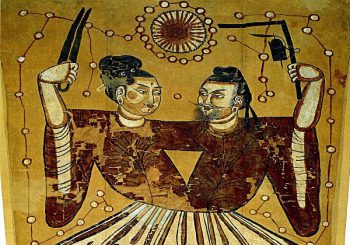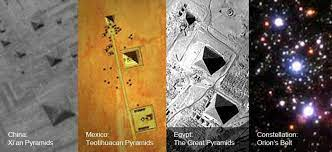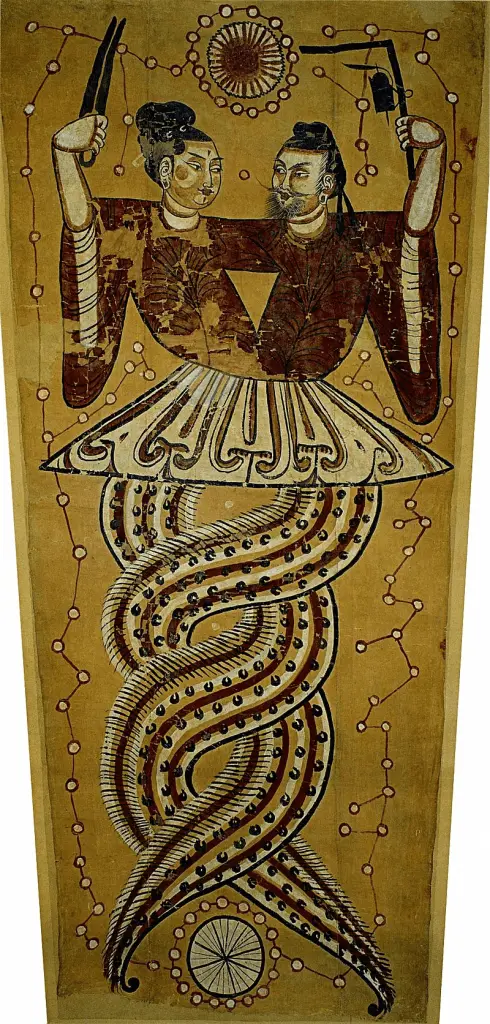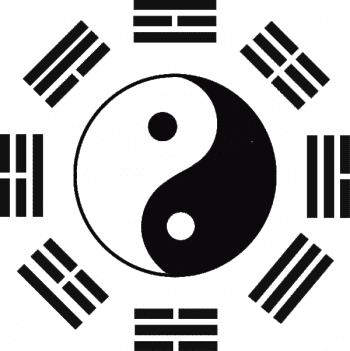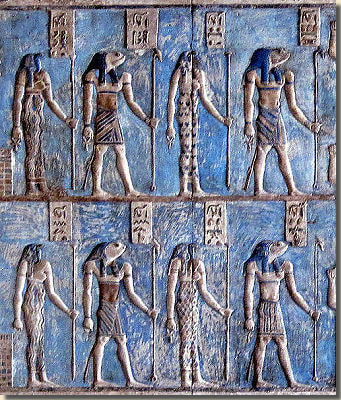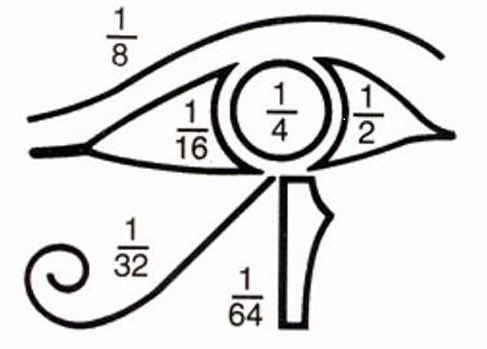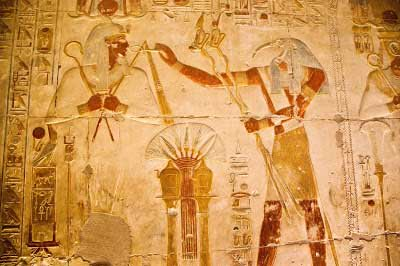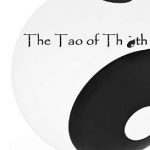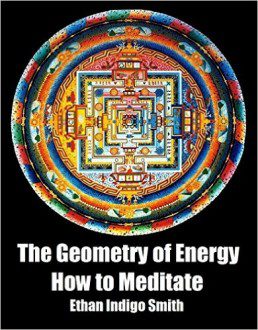Contributing writer for Wake Up World
Tehuti is the original manifestation of what might commonly be known as Thoth today. Tehuti of Khemet/Ancient Egypt is the primal form of the wisdom teacher. Tehuti/Thoth is the original sacred geometer, the primal messenger, and most ancient mystery teacher.
Like all symbological aspects of gods there are lessons in their attributes, exoteric lessons for the wellbeing of the physical and esoteric lessons for the wellbeing of our psyche. Tehuti/Thoth became one of the most powerful and revered gods of the ancient Egyptian pantheon and was is influential his character archetype was revered, recognized and recharacterized the world over.
[pro_ad_display_adzone id=”110028″]
The main characteristic of Thoth is that he moves between worlds of living and the dead, or between the physical realm and the spiritual realm, to both teach humanity and often enough help one of his peer gods. That Thoth is one of the most commonly adopted and more popular gods of neighboring cultures is not surprising for his ability to walk between worlds is unlike other gods and unlike mortals alike.
Some might say aspects of Thoth were stolen rather than adopted with related tangents and aspects perverted to belittle African cultural origins and influences and the potentiation of the wisdom lessons. The very unique nature of Thoth is the ability to transcend realms and to inspire transcendence like sacred geometry itself. Thoth’s teachings and the nature of his archetype to travel between worlds likely led to the widely shared concept of Thoth. What is surprising is that so many diverse and seemingly disconnected cultures and storylines have examples celebrating Thoth and more revere their own version of Thoth. Thoth inspired Hermes and Apollo to point out the most well-known gods of the Thoth archetype. Thoth is a god of The Moon and also Mercury as his very consciousness is mercurial, like the liquid metal, of both solid and liquid worlds.
What is sacred geometry?
Thoth is the primal and ultimate sacred geometer. The nature of Thoth and the nature of sacred geometry is to be of both of both worlds, the physical and spiritual, the exoteric and esoteric. Sacred geometry lessons lead to comprehension of physical and spiritual through concepts that transcend normal limitations of physical and spiritual worlds and lessons, like Thoth. Sacred Geometry studies the complete measure of subtle spiritual energies as well as the complete measure of physical reality. Sacred Geometry reflects that very essence of Thoth, the teacher or translator of spiritual subtle energies into lessons applicable in the physical basic reality. Sacred Geometry and sacred geometers relate correspondences of the physical and spiritual to reveal lessons pertaining to transcendent comprehension, wisdom.
Thoth, being able to transcend the spiritual and physical, is the god of wisdom as well as intuition, as reflected by the Yin energy of The Moon. He and his main feminine counterpart, Ma’at, are variously credited with giving rise to divination processes behind The Tarot cards. The Tarot is a story of the neophyte transcending into master, the individual path to individuation. It is used as a divination tool, but the ideas of Tarot are useful without divination application, relating the spiritual and physical, the timeless and timely.
Thoth is also variously given credit for designing and building what is perhaps the greatest geometric construction ever, The Great Pyramid of Egypt. The Great Pyramid and the other Egyptian pyramids are themselves sacred geometric constructions revealing innumerable measurements and ratios pertaining to our position in the universe and wisdom lessons.
The Great Pyramid specifically aligns with true North, and potentially is constructed aligned with certain constellations. The Great Pyramid complex is theorized to be reflective of The Orion Constellation in its three pyramid design, as well as potentially being aligned with Orion and The North Star via what are called The Star Shafts of The Great Pyramid that point to the sky.
Many debate this alignment possibility however as there would have been a procession or movement that was different many thousands of years ago in the case of the Orion alignment, but it is interesting, especially when noted in relation to other megalithic monuments, and in its potential symbolism of the thrice great/trismigistus title.
The Great Pyramid further reflects the very size, or geometry (Earth measure) of the Earth as well. The height of The Great Pyramid of Giza is 1:43,200 the size of the Earth. It is located at the intersection of the longest latitudinal line and longest longitudinal line on Earth, effectively the center point of the geography of Earth. Certainly, The Great Pyramid contains sacred geometric lessons we have yet to unfold as well. Sacred Geometry reveals physical and spiritual lessons in the same geometrical construction, symbol or mathematics. Thoth as well as The Great Pyramid are of both, and transcend both the spiritual and physical worlds.
The Sacred Geometer of The Tao
Despite being little considered as an example of Thoth energy akin to the manifestations of Hermes and Apollo there is Fuxi of Ancient China, often depicted with his feminine counterpart Nuwa. Fuxi is The Sacred Geometer of The East, or The Tao. Fuxi is the Thoth Energy of The East, of what is now China.
Fuxi with his feminine counterpart, Nuwa, is known as the first of the Three Sovereigns, which is reminiscent of The Thrice Great title given to Hermes Trismigistus as well as The Three Treasures concept in Taoism. Nuwa is the second of The Three Sovereigns, Shennong the third. The Three Treasures are chi, jing and shen energies.
They are correspondingly the heavenly, earthly and human sovereigns, again akin to the thrice great of the earth, the heavens and our psyche. They are typically pictured with the The Sun, The Moon and Constellations, again symbolizing the three realms of heavenly, earthly and humanity. The Three Sovereigns were followed by The Five Emperors as the creation story goes. Fuxi and Nuwa are given credit for the creation of mankind in several creation myths, and they are said to have done so after a destructive river flood.
Some of the oldest known depictions of Fuxi are from the Astana tomb complex in China. Fuxi and Nuwa are depicted with intertwined snake bodies from the waist down, harkening to the esoteric symbolism of Thoth’s staff, the staff of Apollo, the staff of Moses, the Caduceus, as well as Taiji philosophy of the symbolism of The Taiji, the intertwining energies of Yin and Yang around the Grand Ultimate Pole. The Taiji symbol containing Yin and Yang is alternatively called The Grand Ultimate Pole with the coiling energies of Yin and Yang going around it.
Further esoteric symbolism shows that Fuxi holds the Square and Nuwa holds the compass, revered sacred geometry symbols related to masonry of Egypt and used today in combination as one of the main symbols in Freemasonry relating to Sacred Geometry and mystery schools and/or symbolically claiming as much. The two are represented as the microcosmic unified masculine and feminine amidst the macrocosmic representation of celestial.
Fuxi and Nuwa are given credit for bringing life to, as well as civilization instructions to humanity. Both Fuxi and Thoth also are given credit for controlling floods and building waterways to better deal with river floods, hence Fuxi is also pictured carrying a plumb bob, also associated with Thoth, geometry and Freemasonry. Fuxi is given credit for teaching humanity hunting, fishing, cultivation, writing, and like the original sacred geometer, Thoth, Fuxi is credited with intuitive divination itself.
Fuxi is most notably given credit for originally comprehending The Eight Trigrams of The Bagua. The Bagua represent eight primordial elemental energies.
The primordial eight elemental energies of The Bagua correspond with Thoth being from Hermopolis, literally The City of Eight, that being the eight primordial Egyptian elemental energies known as Ogdoad of Neters. Fuxi’s Bagua and Thoth’s Neters each describe eight primordial elemental energies. Fuxi is credited with then revealing the original I’Ching, The Book of Changes, which is the guidebook to a divination process combining one of The Eight Trigrams with another to form remarkable intuitive reasoning via 64 potentials of hexagrams. Fuxi created the divination of The I’Ching whereas Thoth has ties to divination of The Tarot and both are tied to the eight primordial energies.
The 64 potentials of The I’Ching harkens to The Eye of Horus and it’s 63/64th. The Eye of Horus is a symbol of protection and intuition and is often presented with The Heqat fractions of an Egyptian measurement system. Esoterically The Eye of Horus relates to our perception and our ability to perceive so sensitively that we begin to access intuition, like that of The I’Ching and accessing our third eye. Of course, there are many stories of how Thoth saved The Eye of Horus as well as the Eye of Ra.
The origins of Fuxi is said to reach back to approximately 2,800 BC and many physical references of him are found from around 100 – 200 BC. There is a tomb of Fuxi that is said to have existed for some 3,000 years.
Uniting Archetypes Toward Refinement
So, did Thoth energy and Tehuti’s metaphysical lessons travel from Egypt to China and take root in The Sacred Geometer of The East, Fuxi? Or is the idea of such a wisdom divination teacher so universal that these entities and energies were comprehended, each on their own, each with similar characteristics and local nuance? What can we learn in relating these two forms of Thoth energy ad the other forms of Thoth energy? What can we learn when we unite and compliment such similar spiritual wisdom lessons rather than divide and label them?
“In the beginning there was as yet no moral or social order. Men knew their mothers only, not their fathers. When hungry, they searched for food; when satisfied, they threw away the remnants. They devoured their food hide and hair, drank the blood, and clad themselves in skins and rushes. Then came Fu Xi and looked upward and contemplated the images in the heavens, and looked downward and contemplated the occurrences on earth. He united man and wife, regulated the five stages of change, and laid down the laws of humanity. He devised the eight trigrams, in order to gain mastery over the world.”
~ On a pillar honoring Fuxi in Gansu
The idea presented, ‘that men know their mothers only’ might at first appear mysterious but when we comprehend the Jungian idea that developed human beings first know their mothers (dependency) and upon maturity know their fathers (independency) and then can know themselves (individuation). The relationships of the symbolism of serpents especially with a bird/wings/feathers, with wisdom and specifically with the god of wisdom, Thoth, and Fuxi, is profound. The concepts of the storylines of Thoth and Fuxi reveal more about one and the other, compliment each other conceptually, and most importantly provide inspiration to embody the pursuit of wisdom ourselves, one of the very most important ideas behind Thoth Energy. Fuxi and Nuwa embody the energy of the intertwined snakes around the staff of Hermes, The Caduceus, and the Grand Ultimate Pole or Polarity of The Taiji/Yin Yang Symbol.
Fuxi and Nuwa are also possibly related to the ancient Vedic concept of Nagas. Nagas were gods with snake bodies and human heads. Yoga also uses the term Kundalini for the very snake like coiling energy within us which can be refined (ascended) via meditation and meditative movements. Further discovery of a statue depicting a human head with a snake like long neck was recently found at Karahan Tepe, known as the sister site of Gobleki Tepe, suggesting the potential resonance of the archetype being of longstanding and wide range.
The rich symbolism of the numerous related archetypal metaphors provide more complimentary lessons and inspiration for the pursuit of wisdom and self-development. The Thoth energy reveals inspiration for refinement, healing, and transcendent growth. How can we inspire and be inspired with the powerful Thoth archetype?
“Perhaps the commonest dream symbol of transcendence is the snake, as represented by the therapeutic symbol of the Roman god of medicine Aesclepius, which has survived to modern times as a sign of the medical profession. This was originally a nonpoisonous tree snake; as we see it, coiled around the staff of the healing god, it seems to embody a kind of mediation between earth and heaven.”
~ Carl Jung, Man and His Symbols
———
This article is inspired by the author’s book, The Tao of Thoth. The Tao of Thoth is based on the Taiji of The Seven Tenets of Thoth as illustrated in The Kybalion written by The Three Initiates. The Tao of Thoth is inspired by the relationships of The Tao and The Tenets of Thoth. The Tao provides parallel lessons with The Tenets of Thoth, and each aim towards enhancement and embodiment of lessons pertaining to self-development.
The Geometry of Energy: How to Meditate
In ‘The Geometry of Energy’, author Ethan Indigo Smith explores meditation and meditative energies through the sacred four dimensions of geometry. Simple and profound, it is an empowering four-step meditation designed to lead to individuation, self-development, an enhanced understanding of energy, and psychological and spiritual cleansing.
Useful to meditation newcomers and longtime practitioners alike, ‘The Geometry of Energy’ provides insights into a variety of meditative processes for psychological and spiritual cleansing and enhancement.
‘The Geometry Of Energy: How To Meditate’ is available here on Amazon.
Recommended articles by Ethan Indigo Smith:
- The Sacred Geometry of Tarot
- The Four Dimensions of the Tree of Life – Part 1
- The Four Dimensions of the Tree of Life – Part 2
- The Duality of Polarity: Beyond Nationalism and Globalism
- The Energy of the Divine Masculine
- Tai Chi – The “Grand Ultimate” Form of Self Development
- Understanding Ascension: The Geometry of Energy
- The Mandala: The Sacred Geometry of Meditation
- The Common Origins of Religions and Theology
- Meditation 108: A Guide to Meditating for the Infant Practitioner
About the author:
Activist, author and Tai Chi teacher Ethan Indigo Smith was born on a farm in Maine and lived in Manhattan for a number of years before migrating west to Mendocino, California. Ethan’s work is both deeply connected and extremely insightful, blending philosophy, politics, activism, spirituality, meditation and a unique sense of humor.
You can connect with Ethan on Facebook, check out his author page on Amazon, or visit his new websites, Geometry Of Energy and Meditation 108, where Ethan offers lessons on individuation, meditation, the conceptualization of energy, and the metaphysical significance of 108.
Ethan’s books include:
- The Geometry of Energy: How to Meditate: Simple and profound, this book offers an empowering four-step meditation, focused through the sacred dimensions of geometry.
- The Little Green Book of Revolution an inspirational book based on ideas of peaceful revolution, historical activism and caring for the Earth like Native Americans.
- Meditation and Geometry for The Youth: A short and sweet book to introduce young people to meditation and sacred geometry, in a simple format for the youth and youthful alike.
- 108 Steps to Be In The Zone, a set of 108 meditative practices for self discovery and individual betterment, including techniques to develop balance, transmute sexual energy.
[pro_ad_display_adzone id=”110027″]

